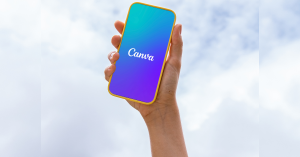 Design is no longer limited to professionals with expensive software. Today, Canva makes it possible for anyone to create eye-catching visuals in minutes. With this single tool, you can design social media posts, presentations, flyers, resumes, business cards, posters, infographics, ebooks, and even short videos. Everything happens online and requires only a few clicks.
Design is no longer limited to professionals with expensive software. Today, Canva makes it possible for anyone to create eye-catching visuals in minutes. With this single tool, you can design social media posts, presentations, flyers, resumes, business cards, posters, infographics, ebooks, and even short videos. Everything happens online and requires only a few clicks.
If you are new, this guide will help you learn Canva step by step. Each stage is written in clear language so you can follow along easily. By the end, you will know how to design with confidence, even if you never created graphics before.
Why Choose Canva for Beginners
- Free to start with plenty of features.
- Ready templates save time.
- Drag-and-drop interface makes design simple.
- Huge library of photos, elements, and fonts.
- Options to work alone or with a team.
Learning Canva step by step means you can unlock all these benefits and create designs for any purpose.
Step 1: Create Your Account and Explore the Dashboard
Go to Canva.com or download the app. Sign up with your email, Google, or Facebook account. Once logged in, the dashboard appears with categories like Instagram posts, presentations, resumes, YouTube thumbnails, and more. Take a moment to scroll and see what Canva offers. This is your creative workspace.
Step 2: Pick a Template or Start from Scratch
Click on a design category. You can choose a blank canvas or select a ready template. Templates save time and guide you with layouts, fonts, and colors. For example, if you need a flyer, search “flyer” and Canva will show hundreds of designs.
Step 3: Work with Text
Click any text box in your template to edit it. Replace sample text with your own words. Use the toolbar at the top to change font, size, color, spacing, and alignment. Keep your words short and clear. Good text makes your design readable and professional.
If you want to improve your writing, check out [How to Use Grammarly for Flawless Writing in 2024].
Step 4: Add Photos, Videos, and Elements
Use the left panel to find Photos and Elements. You can search millions of stock images, videos, icons, shapes, and stickers. Drag them into your design and place them where they look best. If you want to use your own visuals, click Uploads to add images, videos, or logos.
Step 5: Customize Colors and Styles
Colors set the mood of your design. Use the top toolbar to select a new color for text, shapes, or backgrounds. Canva also suggests palettes that match well together. Stay consistent with colors so your design looks balanced.
Step 6: Adjust Layout and Position
Click and drag elements to move them. Canva shows smart guides to help you align items evenly. Use the position option in the toolbar to bring items forward, backward, or center them perfectly. A clean layout makes your design easy to understand.
Step 7: Try Extra Features
Canva is more than templates. Use advanced tools like:
- Background Remover (Pro) to clean up photos.
- Animate to add movement to text and objects.
- Transparency to blend images or create watermarks.
- Magic Resize (Pro) to quickly adjust a design for other platforms.
These tools give your work a polished look.
Step 8: Save and Download Your Design
When your design feels ready, click the Download button at the top. Choose the format:
- PNG/JPG for images
- PDF for documents
- MP4/GIF for videos and animations
This ensures your design is saved in the best format for your purpose.
Step 9: Share or Collaborate
You can share your design directly from Canva. Click Share and invite team members to edit, or post straight to social platforms like Facebook and Instagram. This makes Canva useful for both personal and business use.
Designs You Can Create with Canva
Canva offers endless options. You can design:
- Social media graphics (Instagram, Facebook, LinkedIn, Twitter)
- YouTube thumbnails and channel art
- Flyers, posters, and brochures
- Resumes, cover letters, and presentations
- Infographics and data charts
- Ebooks, guides, and workbooks
- Short videos and animated posts
- Business cards and invitations
With practice, you can handle almost any design project.
Conclusion
Learning Canva step by step is simple when you follow a clear process. Start by creating your account, explore templates, edit text, add elements, adjust colors, and finish with download or sharing. Each tool is easy to find and quick to use.
With practice, you can design everything from social media posts to ebooks. Canva gives you the power to create professional visuals without stress or expensive software
